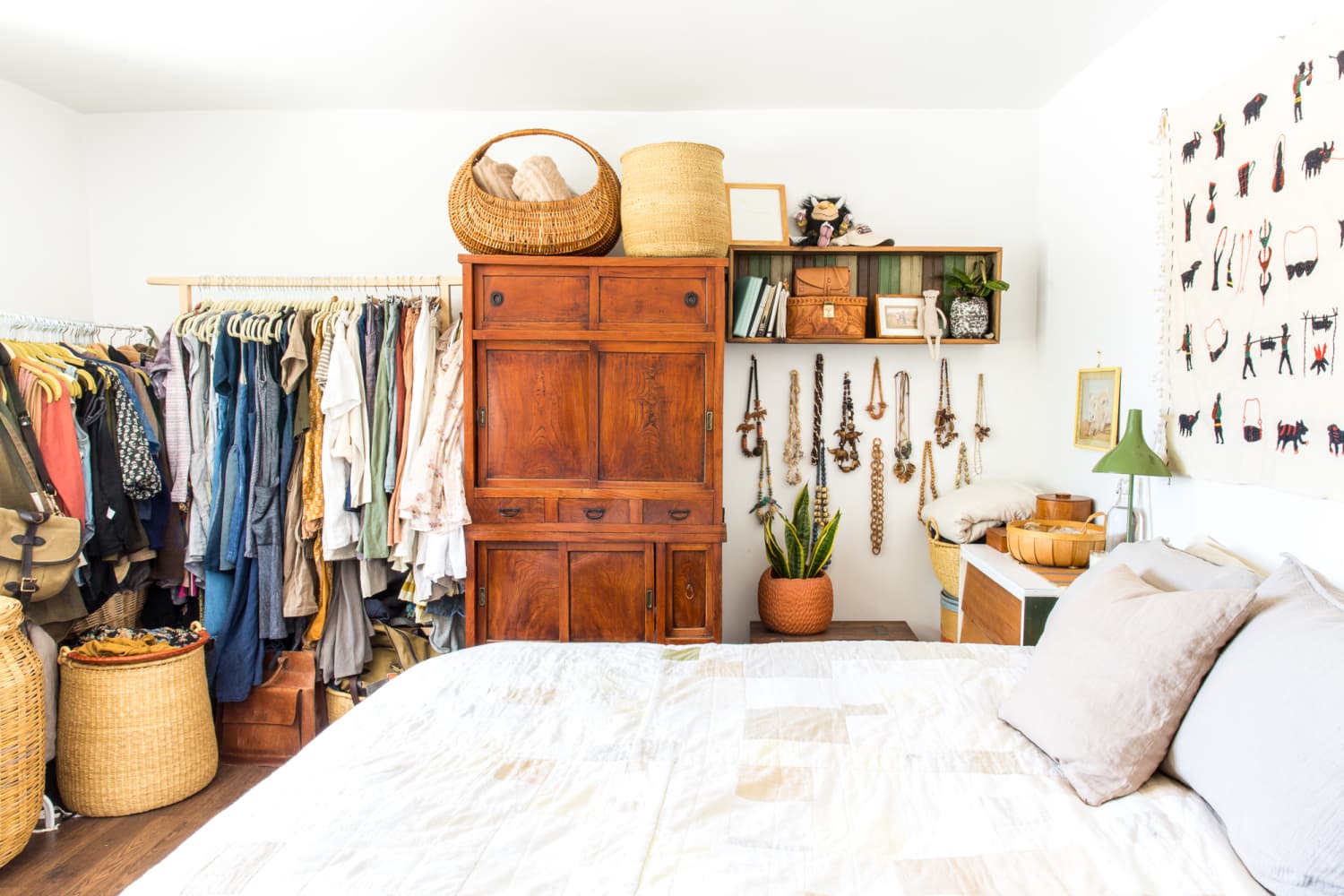
If you love thrifting and antiquing, then you know that the thrill is in the search. With any type of secondhand shopping, especially when looking for vintage furniture, you never know what you’re going to find. One item that’s commonly found when looking at vintage furniture has a name that you might not recognize? A chifferobe.
Though it sounds fancy, you’ve likely seen or even used one before. Chifferobes are often confused with wardrobes and armoires, so I asked an expert to help break down the difference — and why you really ought to keep your eyes open for them the next time you’re thrift shopping.
Chifferobes are much like armoires and wardrobes — they’re all freestanding storage units that are used to stow away clothing, linens, and other various knickknacks. If you’re trying to maximize your clothing storage, they are the perfect solution (especially if your room either doesn’t have enough closet space, or has no closet at all). The three pieces of furniture have similar uses, but their origins vary. Despite their similarities, there are also some key differences between them.
“A chifferobe is an American term for a tall storage piece that’s divided into two parts: a closed hanging space on one side and a chest of drawers on the other,” explains design historian Maile Pingel. Their outward appearance and construction can be different — some may be crafted with solid wood throughout while others can be inset with mirrors. The name chifferobe is a portmanteau of “chiffonier,” a type of French chest of drawers, and “wardrobe.”
“It’s thought that the term was first used in a 1908 Sears catalog, where they were described as ‘a modern invention,’” Pingel says. “The term was most used in the South as a genericization for wardrobe, and it even made its way into such famous novels as To Kill a Mockingbird and The Color Purple.”
“A wardrobe is a tall cabinet with two doors that open to reveal shelving,” Pingel says. “The term, which dates to 14th century England, originally denoted an entire room for storing clothes and linens. As ways of living changed, wardrobes offered a more convenient solution, especially as they were designed to be dismantled when needed.”
According to Pingel, over the 16th and 17th centuries, they also came to include drawers or pigeonholes in the lower portion, and by the 18th century they often had a metal rod for hanging clothes and mirrors mounted onto the doors. “Wardrobes remained popular throughout the Victorian period but fell out of use in the 20th century, when built-in closets became the norm,” she adds.
“Armoire is the French term for a closed cupboard that’s much like a wardrobe,” Pingel says. “The word appears in inventories dating as far back as the 13th century, when it referred to freestanding cabinets for storing all manner of household items, including weaponry or arms, hence the name.”
Armoires are typically bigger than wardrobes, and while wardrobes are designed to primarily store clothing, armoires are more versatile and can be placed in any room in your home that needs more storage space. “They, too, were designed to be dismantled when needed, and could be shelved or not, but generally didn’t have drawers. They were often painted or carved, and adorned with architectural motifs and locking mechanisms,” Pingel says.
No matter which one you choose, chifferobes, wardrobes, and armoires can all be used to maximize your storage space. “They’re all essentially freestanding closets, but it’s their origin stories that really set them apart — the wardrobe taking its name from the room itself, the armoire from its history as a gun safe, and the chifferobe from a pretty clever marketer,” Pingel says. “They may be largely the same in function, but I think it’s amazing how evocative each one is of a different time and place!”
NB: Ratingmania is a place to find the finest discounts on the internet and all the necessities.
Source url www.apartmenttherapy.com
Ideas & Inspiration,Styles & Trends,trends,team:style








